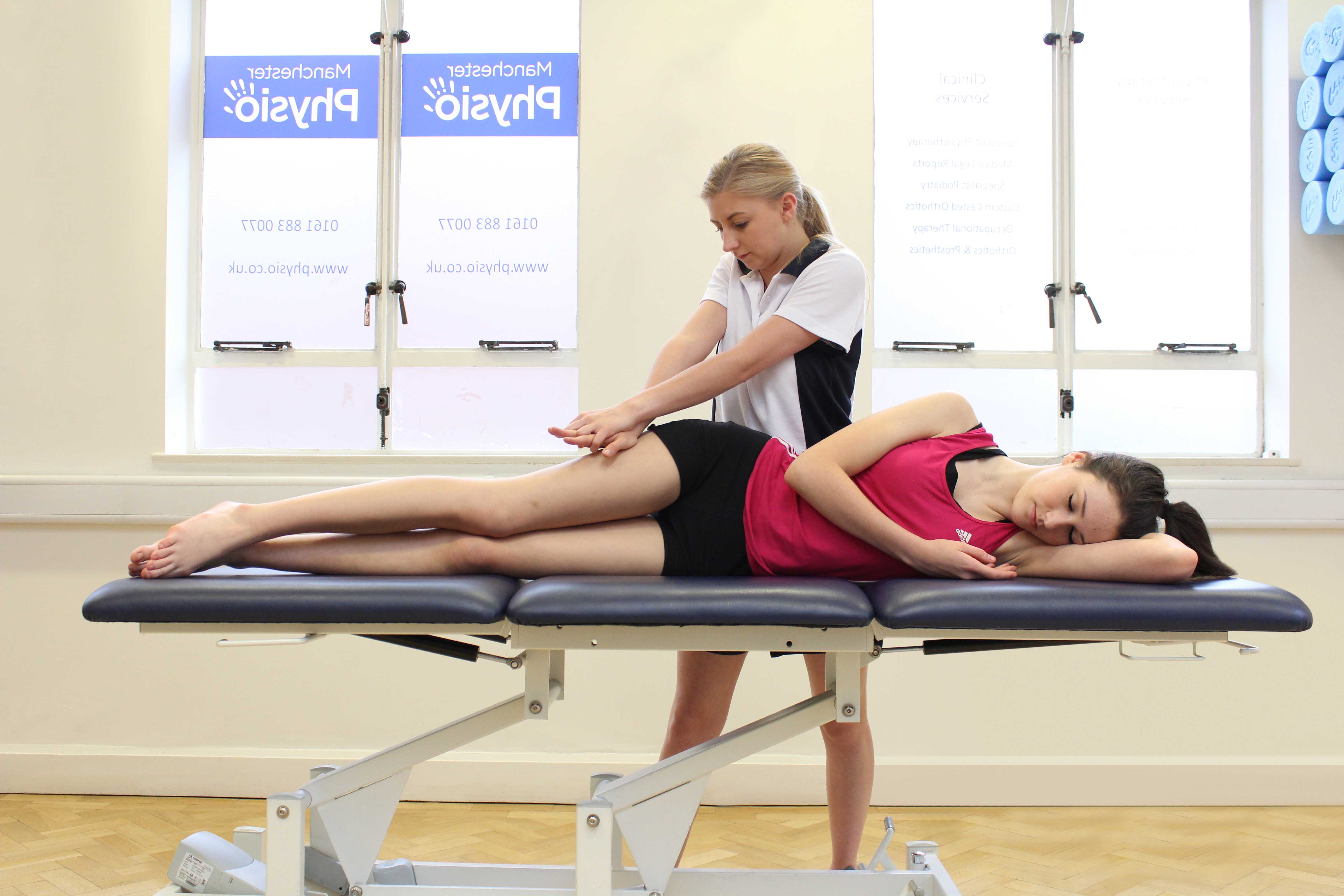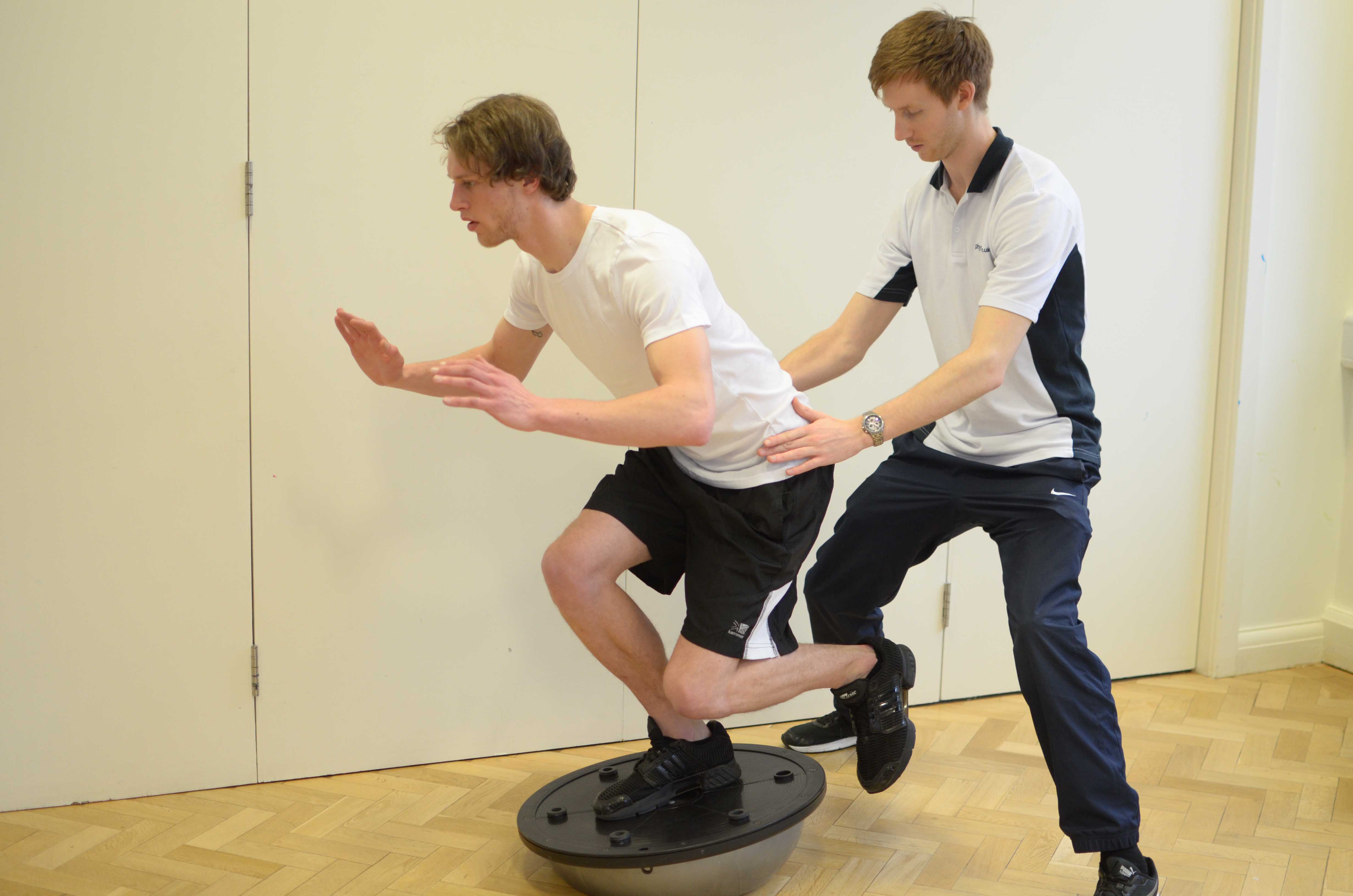What is iliotibial band syndrome?
The iliotibial band is a tough band of connective tissue that runs down the outside of the thigh from the hip to the outside of the knee. Iliotibial band syndrome is when this band of tissue rubs as it passes over a bony bump on the outside of the knee joint. Physiotherapy is important if you recognise symptoms of iliotibial band syndrome.
How does iliotibial band syndrome happen?
When the knee is bent and straightened the iliotibial band slides over a bony bump on the outside of the knee. If this movement is performed repeatedly or if the iliotibial band is excessively tight, it can cause wear and tear of the band. To heal the wear and tear, the body starts an inflammatory response. This causes pain on the outside of the knee.
 Above: Therapist performing knee assessment
Above: Therapist performing knee assessmentWhat are the symptoms of iliotibial band syndrome?
Iliotibial band syndrome results a gradual onset of pain on the outside of the knee. The pain is aggravated by activities involving repeated bending and straightening of the knee, such as running. The pain initially presents as a dull ache down the outside of the knee near the end of a period of exercise and disappears when you stop. Other symptoms may include:
What should I do if I have iliotibial band syndrome?
If you have or suspect you have iliotibial band syndrome you should consult a physiotherapist as it will not get better on its own. In the meantime you can apply ice the outside of your knee using a bag of frozen peas or crushed ice wrapped in a damp cloth for 15–20 minutes over the outside of the knee every 1–2 hours.
What shouldn’t I do if I have iliotibial band syndrome?
If you have or suspect you have iliotibial band syndrome, you should not ignore the problem and continue to exercise. This may lead to your problem getting worse such that your pain becomes more severe and is felt more frequently.
 Above: Progressive knee strengthening exercises supervised by therapist
Above: Progressive knee strengthening exercises supervised by therapistPhysiotherapy treatment for iliotibial band syndrome.
Physiotherapy is imperative in the treatment of iliotibial band syndrome. Initially, your physiotherapist can assist in diagnose your problem and establish its severity. Following your initial assessment, your physiotherapist will design an appropriate treatment plan. Treatment may involve:
Could there be any long-term effects from iliotibial band syndrome?
If it is properly diagnosed and treated, iliotibial band syndrome generally does not produce any long-term effects. In a small number of cases, surgery may be required. Surgery is only performed if physiotherapy treatment has failed to give relief.
Please call Physio.co.uk on 0330 088 7800 to arrange an appointment or book online today.

 0330 088 7800
0330 088 7800


































